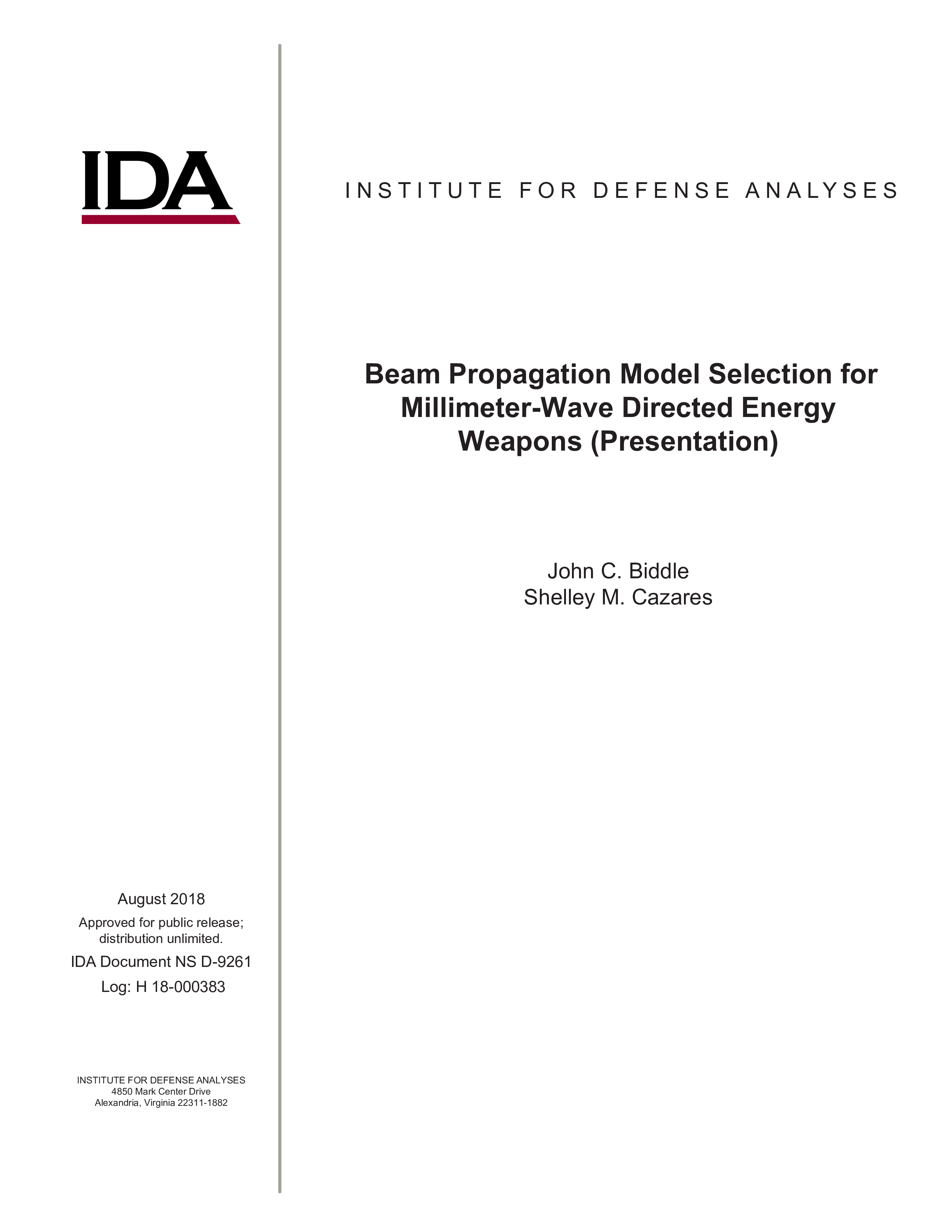Beam Propagation Model Selection for Millimeter-Wave Directed Energy Weapons (Presentation)
August, 2018
IDA document: D-9261
FFRDC: Systems and Analyses Center
Type: Documents
Division: Science and Technology Division,
Science, Systems and Sustainment Division
Authors:
IDA document: D-9261
FFRDC: Systems and Analyses Center
Type: Documents
Division: Science and Technology Division
Authors:
Authors
John C. Biddle, Shelley M. Cazares
See more authors

